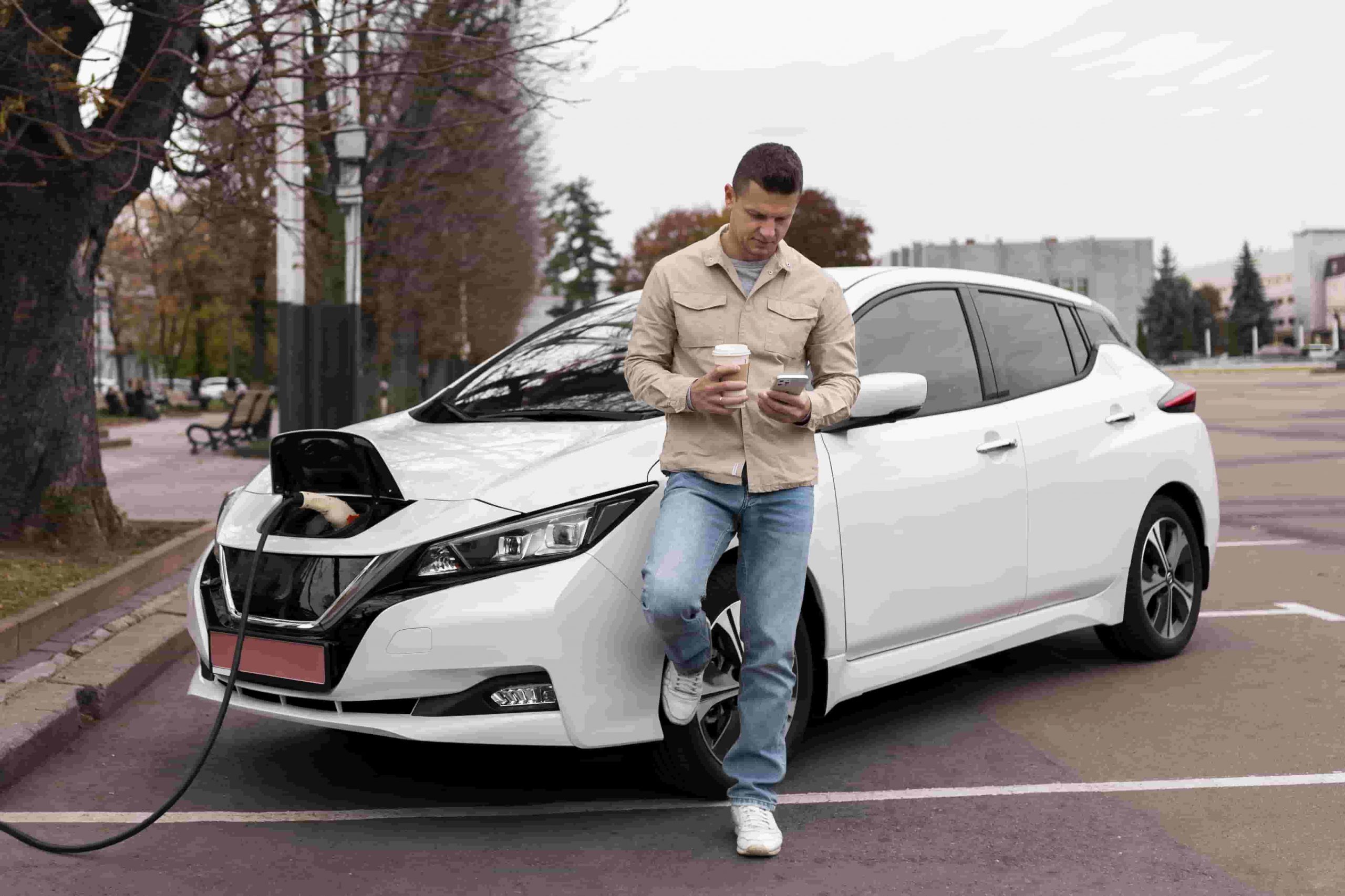- Our Firm
- Personal Injury
-
-
-
Personal Injury Lawyers
-
-
-
-
-
-
Injured in an accident? At Diamond & Diamond, our team of lawyers rely on their reputation in the field and extensive experience in personal injury to provide clients with a dedicated support system over the duration of their case.
-
-
-
-
-
HAVE YOU RECENTLY BEEN INJURED IN AN ACCIDENT?
-
-
-
- Corporate
- Class Action

Electric Vehicle Safety Risks: Beyond the Hype
Electric vehicle safety risks have become a hot topic. As more of these vehicles hit the road, it’s important to look past the sleek designs and impressive technology to truly understand the potential risks. This is about more than just the driver; it’s about everyone sharing the road.
The Elephant in the Room: EV Weight and Why It Matters
One of the most significant electric vehicle safety risks stems from their weight. Electric car batteries are heavy, often weighing over 1,000 pounds – some even exceed 3,000 pounds. Government data shows the average vehicle weight is around 4,300 pounds in 2023.
However, some electric SUVs and pickup trucks are significantly heavier. This weight difference matters, especially in an accident. Understanding the potential risks associated with heavier electric vehicles is crucial for all drivers.
Why EV Weight Is a Game Changer in a Crash
Imagine two vehicles colliding. One is a standard sedan, the other a large electric SUV. Physics tells us that the heavier vehicle, the SUV, will have a greater force upon impact.
This means the occupants of the lighter vehicle face a much higher risk of serious or fatal injuries. Research by the IIHS has demonstrated this, with heavier vehicles causing more severe damage and greater forces on the occupants of lighter vehicles in a collision.
Consider a rear-end collision. The battery’s weight, often located in the rear of the car, amplifies the impact on the vehicle in front. This puts the occupants of that vehicle at significantly greater risk.
Beyond the Crash: EV Weight and Infrastructure Concerns
Electric vehicle safety risks extend beyond the vehicles themselves. Our existing infrastructure—roads, bridges, parking garages—were designed decades ago with lighter vehicles in mind. Experts point to this as a cause for concern, especially with the increasing presence of electric commercial vehicles.
Crumbling Under Pressure? The Strain on Roads and Bridges
Roads and bridges already face wear and tear. They may be ill-equipped to handle a significant increase in heavier electric vehicles. Over time, this added stress could lead to faster deterioration, resulting in costly repairs and potential safety hazards.
This problem isn’t limited to roads; parking garages designed with weight limits in mind also face potential risks as electric vehicles become more common. The weight of electric vehicles poses a real challenge to the longevity and safety of our existing infrastructure.
The Safety Guard Dilemma
Even safety features, such as guide rails and barriers, are being put to the test by the weight of electric vehicles. Euro NCAP, an organization renowned for vehicle safety testing, reveals that heavier vehicles can overwhelm these safety systems during collisions.
This raises concerns about the effectiveness of existing infrastructure in preventing even more severe outcomes in crashes involving electric vehicles. The increasing weight of electric vehicles demands a reevaluation of current safety standards and infrastructure.
The Battery Factor: A New Set of Electric Vehicle Safety Risks
Electric vehicles are powered by lithium-ion batteries. This technology is known for its efficiency but also its potential risks. While battery fires in EVs are relatively rare, they present unique challenges compared to fires in traditional gas-powered vehicles.
Electric Vehicle Fires: A Different Beast to Tackle
Lithium-ion battery fires burn hotter and longer than gasoline fires. This makes them harder to extinguish. The National Fire Protection Association (NFPA) highlights the need for specialized training and equipment for firefighters dealing with electric vehicle fires.
These fires often require large amounts of water or different suppression agents to control the thermal runaway that can occur within a damaged lithium-ion battery. The toxic gases released during an EV battery fire pose a further risk to first responders and those involved in an accident.
The Silent Danger: Pedestrians and Electric Vehicle Safety Risks
The quiet operation of electric vehicles, while a benefit in terms of noise pollution, introduces another set of safety risks—especially for pedestrians. The lack of engine noise makes it difficult for pedestrians to perceive an approaching electric vehicle. This is particularly true in low-speed urban environments, where pedestrian traffic is high.
Sounding the Alarm: Can You Hear that Electric Car?
Studies by organizations like the National Highway Traffic Safety Administration (NHTSA) have highlighted the increased risk of collisions between pedestrians and quiet electric vehicles. This has led to regulations requiring electric vehicles to emit sounds at low speeds to alert pedestrians.
Despite these efforts, both pedestrians and drivers need to exercise extra caution. This means looking both ways before crossing and being aware of your surroundings. The silent approach of electric vehicles necessitates heightened awareness from both drivers and pedestrians.
FAQs about electric vehicle safety risks
What are the safety hazards of electric vehicles?
The safety hazards of EVs go beyond those found in gasoline-powered vehicles. These include risks related to high-voltage systems, battery fires, the weight of the vehicles, pedestrian safety due to quiet operation, and the need for specialized training for emergency responders.
Addressing these concerns requires careful consideration by manufacturers, policymakers, and drivers alike. It is essential to acknowledge and mitigate these hazards to ensure the safe integration of electric vehicles into our transportation systems.
What are the dangers of driving an electric vehicle?
Electric vehicles share some risks with gas-powered cars. However, the danger lies in their distinct characteristics. The high-voltage systems pose a risk of electric shock during accidents. This demands cautious handling by first responders.
Battery fires, while uncommon, are difficult to extinguish and present unique hazards due to their intensity and toxic fumes. Understanding these specific dangers is crucial for anyone involved in the manufacturing, maintenance, or emergency response related to electric vehicles.
How safe are electric vehicles in a crash?
Electric vehicles often perform well in crash tests designed for structural integrity and occupant safety. The weight of the battery can provide an advantage, offering a protective buffer in some collisions.
But the increased mass becomes a drawback when impacting lighter vehicles or vulnerable road users. This could lead to more severe injuries for those involved. The safety of electric vehicles in a crash is a complex issue, influenced by various factors beyond their structural design.
What are 3 drawbacks of electric vehicles?
Three noteworthy drawbacks of EVs are: the substantial weight increases risks to those in lighter vehicles during accidents; the higher initial purchase price compared to similar gas-powered vehicles can be a financial obstacle; and the existing infrastructure, such as charging stations, isn’t as widespread compared to gas stations, leading to range anxiety.
Conclusion
Electric vehicle safety risks present complex challenges. While electric vehicles have many advantages, it’s important to approach their adoption with a clear understanding of their potential impact. We must balance environmental benefits with responsible manufacturing, updated infrastructure, and informed driving practices to maximize the safety and efficiency of our roads for all.
Featured image by Image by freepik
Need a Lawyer?
We are here 24/7 to address your case. You can speak with a lawyer to request a consultation.
1-800-567-HURTGet started with a free consultation
OUR TEAM
- Ishmeet Sandhu
- Nolan Bachmann
- Annamarie Demaj
- Jeffrey Hum
- Tofunmi Adeyeye
- Alessia De Gasperis
- Amandeep Chawla
- Jeremy Tsoi
- Kimiya Razin
- Shir Zisckind
- Gray Sinden
- Shelly Bard
- Christian Brown
- Daly Canie
- Tanveer Sohal
- Prianka Virdi
- Noah Brownstone
- Justin Kaminker
- Harinder S. Bhatti
- Craig Yargeau
- Kiran Birk
- Amit Singh
- Andrei Teju
- Maria Zahid
- Matthew Douglas
- Jacob Elyk
- Harry Gill
- Kristina Olivo
- Egi Bano
- Cam Woolley
- Charles Thompson
- Alexandra McCallum
- John Sime
- Allan Cocunato
- Patrick Poupore
- Erika Henderson
- Marina Korshunova
- Brandon Handelman
- Regeena Alapat
- Ryna Kim
- Natalia Poliakova
- Isaac Zisckind
- Manpreet Bhogal
- Mathura Santhirasegaram
- Nikolai Singh
- Sandra Zisckind
- Jeremy Diamond
- Michael Blois
- Darryl Singer
- Nadia Condotta
- Tinashe Madzingo
- Megan Armstrong
- Veronica D’Angelo
- Corey J. Sax
- Scott Tottle
- Steven Wilder
- TJ Gogna
- Jillian Carrington
- Joshua Himel
- Simon Diamond
- Cory Rubin
- Simon Mariani
- Brandon Greenwood
- Basil Bansal
- Nastassia Ivanova
- Tania Fleming
- George Laloshi
- Patrycja Majchrowicz
- Diana Iakossavas
- Dior Africa
- Alex Ragozzino
- Liana Saccucci
- Richard J. Chang
Head Offices
Main Offices
Barrie
Main Office
168 Bayfield Street
Calgary
Main Office
1331 Macleod Trail SE, Suite 645
Edmonton
Head Office
4246 97 Street NW, Unit 103
Halifax
Consultation Office
1701 Hollis St
London
Main Office
256 Pall Mall St, Suite 102
Oshawa
Consultation Office
50 Richmond Street E, Unit # 108 B
Ottawa
Main Office
955 Green Valley Crescent, Unit 315
Sudbury
Main Office
31 Larch Street, Unit 300
Timmins
Main Office
120 Cedar Street South, Unit 002A
Toronto
Head Office
255 Consumers Road, 5th Floor
Vancouver
Head Office
1727 West Broadway, Suite 400
Windsor
Main Office
13158 Tecumseh Rd. E. Unit 3B
Additional Areas Served
Ontario
- Ajax
- Alberta
- Aurora
- Barrie
- Belleville
- Bowmanville
- Brampton
- Brantford
- Brockville
- Bracebridge
- Bradford
- Burlington
- Burnaby
- Calgary
- Chatham
- Cobourg
- Collingwood
- Cornwall
- Durham
- Edmonton
- Elliot Lake
- Etobicoke
- Georgetown
- Guelph
- Hamilton
- Huntsville
- Kanata
- Kelowna
- Kingston
- Kitchener
- Leamington
- London
- Markham
- Milton
- Mississauga
- Muskoka
- Niagara Falls
- Newcastle
- Newmarket
- North Bay
- North York
- Oakville
- Orangeville
- Orillia
- Oshawa
- Ottawa
- Owen Sound
- Parry Sound
- Perth
- Peterborough
- Pickering
- Prince Edward County
- Richmond
- Richmond Hill
- Sault Ste Marie
- Sarnia
- Scarborough
- St. Catharines
- St. Thomas
- Stouffville
- Sudbury
- Surrey
- Thunder Bay
- Timmins
- Toronto
- Uxbridge
- Vancouver
- Wallaceburg
- Waterloo
- Welland
- Whitby
- Windsor
- Woodstock













